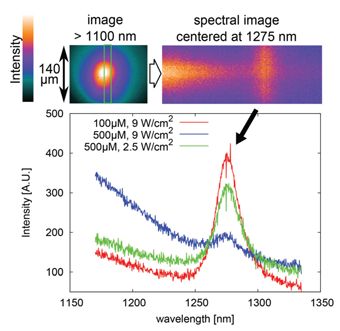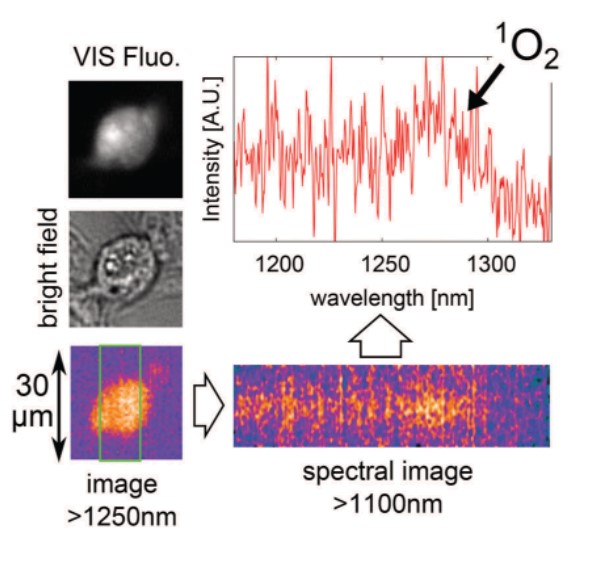Singlet Oxygen Imaging
Molecular oxygen is one of the most important molecules in maintaining and extinguishing life as well as destroying materials. For several decades, researchers have been intrigued by the physical and chemical properties of molecular oxygen’s lowest excited state, singlet oxygen (1O2). Singlet oxygen has a unique reactivity that can result in polymer degradation or the death of biological cells. Its role as an intermediate in cell death is exploited by photodynamic therapy (PDT) for cancer, a technique in which light is utilized as a medical tool.
In PDT, a photosensitizer is incorporated into abnormal tissues and then irradiated with visible light so that it transfers energy to ground-state oxygen via the type II photochemical pathway, producing singlet oxygen (detected by its weak 1270 nm emission). Several high-spatial-resolution methods have been proposed to detect 1O2 luminescence using either a single photomultiplier tube (PMT), a linear InGaAs detector array, or a two-dimensional InGaAs detector.

Application Notes
Real-Time Imaging of Singlet Oxygen via Innovative Microspectroscopy Instrument

Molecular oxygen is one of the most important molecules in maintaining life as well as in mechanisms by which life is extinguished and materials destroyed. For several decades,
researchers have been intrigued by the physical and chemical properties of molecular oxygen’s lowest excited state, singlet oxygen (1O2). In particular, singlet oxygen has a unique reactivity that can result in…Read Full Article
